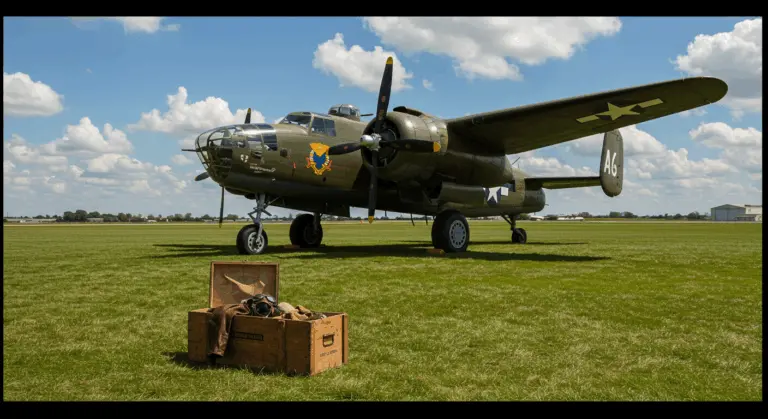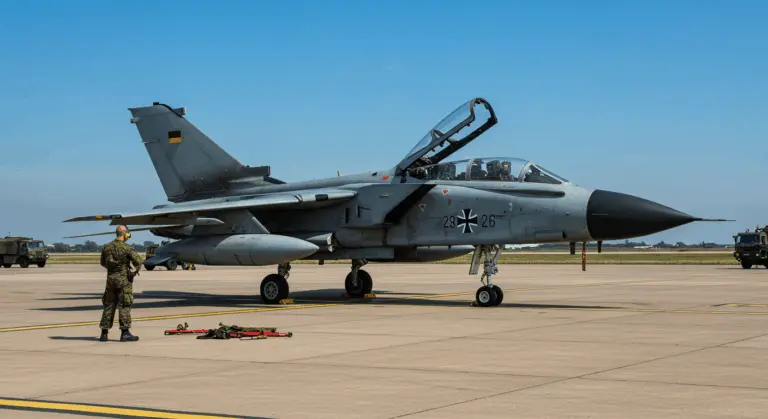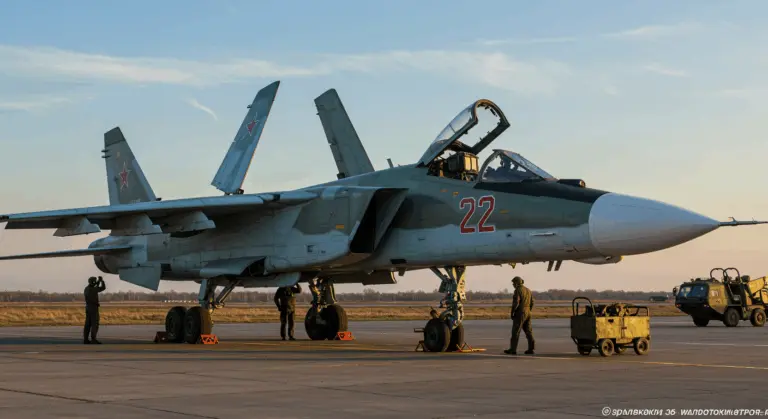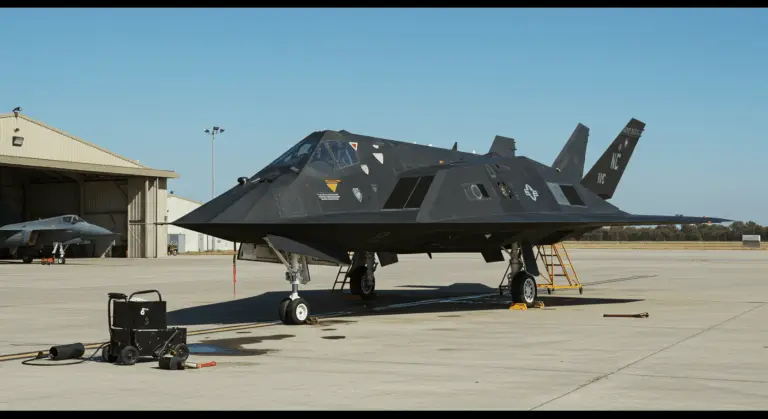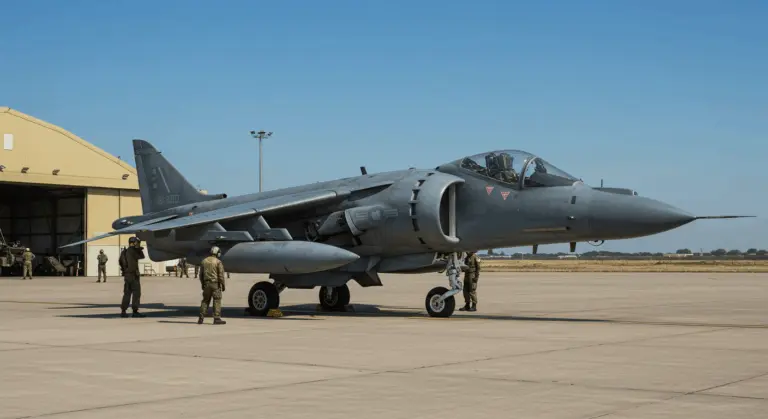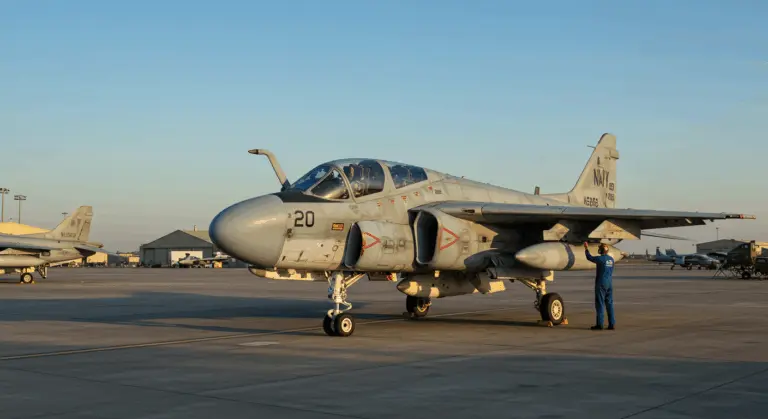Overview of the A-7 Corsair II
The LTV A-7 Corsair II stands as one of America’s most accomplished carrier-capable subsonic light attack aircraft, developed by Ling-Tempo-Vought in the early 1960s. Born from the proven Bought F-8 Crusader lineage, it underwent extensive modifications to excel in ground-attack missions, eventually replacing the Douglas A-4 Sky hawk.
Distinguished from its F-8 predecessor by a more compact, broader fuselage and extended-span wings that eliminated the Crusader’s variable-incidence mechanism. This design reflected a clear shift in priorities—emphasizing payload capacity and operational range over raw supersonic speed. The aircraft entered service in 1967 and quickly established itself as the U.S. Navy’s primary light bomber, serving from the Vietnam War through Operation Desert Storm in 1991.
The A-7’s powerful mix of substantial payload, impressive range, and advanced avionics made it an effective subsonic attack platform. For over two decades, it served as the backbone of naval strike capability.
Development of the A-7 Corsair II
Development commenced in the early 1960s as the U.S. Navy recognized the urgent need to replace its aging A-4 Sky hawk fleet. The design philosophy prioritized several key improvements:
-
Enhanced payload and range
-
Subsonic speeds for better fuel efficiency
-
A simpler, more cost-effective airframe
-
Compact dimensions for carrier operations
Bought’s innovative proposal, building on its proven F-8 Crusader design, secured the competition victory in 1964. Using proven F-8 components sped up development considerably, culminating in the first prototype’s maiden flight on September 26, 1965.
Following rigorous flight testing that validated the design’s promise, the A-7 officially entered U.S. Navy service on February 1, 1967. The quick development timeline reflected both efficient program management and a solid basic design.
Origins of the A-7 Corsair II
The A-7’s genesis began with a critical 1963 U.S. Navy requirement for an advanced light attack aircraft—a demand intensified by the escalating Vietnam War’s need for enhanced payload, extended range, and greater accuracy.
Production and Variants
Over two decades, 1,569 Corsair II’s were built in numerous variants:
-
A-7A: The initial U.S. Navy model, powered by a Pratt & Whitney TF30-P-6 engine.
-
A-7B: An improved version with greater thrust.
-
A-7D: A U.S. Air Force variant with a more powerful Allison TF41-A-1 engine, a heads-up display (HUD), and an inertial navigation system.
-
A-7E: The definitive naval variant, which integrated the powerful TF41 engine with advanced avionics.
-
TA-7C: A two-seat, combat-capable trainer.
-
EA-7L: A version modified for electronic warfare missions.
-
International Models: Variants were also produced for Greece (A-7H) and Portugal (A-7P).
Operational History of the A-7 Corsair II
The A-7 Corsair II built an impressive service record spanning several decades. Vietnam marked its baptism by fire, where the aircraft’s precision and payload capacity proved extremely valuable.
Throughout the Vietnam conflict, A-7s flew over 97,000 combat sorties while suffering merely 54 losses—demonstrating the aircraft’s durability and reliability.
Beyond American service, the A-7 distinguished itself with Portugal’s and Greece’s air forces. The Hellenic Air Force earned the distinction of being the type’s final operator, retiring their fleet in 2014 after decades of faithful service.
Vietnam War and Early Operations
The A-7 Corsair II entered combat in Vietnam during 1967 when the inaugural U.S. Navy A-7A squadrons deployed aboard USS Ranger. Initially relegated to relatively low-risk missions while crews mastered the new aircraft, the A-7 quickly proved its worth in Southeast Asia’s unforgiving combat environment.
In 1972, A-7s accomplished a notable feat by finally destroying the heavily defended Thanh HOA Bridge. The enhanced A-7E variant, which had entered service in May 1970, demonstrated exceptional precision during the intensive Operations Linebacker I and II campaigns.
Throughout the protracted conflict, the Corsair II built a solid reputation for reliability and survivability. Its sophisticated navigation and weapons delivery systems enabled pinpoint strikes in adverse weather and complete darkness—advanced capabilities for that era.
Post-Vietnam Era and Foreign Operators
Following Vietnam’s conclusion, the A-7 remained a key U.S. strike aircraft, taking part in the 1980s operations across Lebanon, Grenada, and Libya. Operation Desert Storm in 1991 marked its final U.S. combat deployment—a fitting capstone to an illustrious career.
Portugal operated their A-7P variants until 1999, while Greece’s Hellenic Air Force flew both A-7H and surplus A-7E models. The Greeks ultimately became the final operator, retiring the type in 2014 after an impressive operational run.
These international operators valued the A-7 for its effective combination of payload, range, and advanced avionics—all delivered at a reasonable cost. The aircraft’s robust design philosophy and straightforward maintenance requirements made it particularly attractive to smaller air forces operating under tight budgetary constraints.
Design Features of the A-7 Corsair II
While the A-7’s design drew heavily from the F-8 Crusader blueprint, it underwent extensive modifications tailored specifically for its attack role. Engineers crafted a more compact, broader fuselage and incorporated a larger wing with reduced sweepback to improve lift characteristics and low-speed handling.
Key features included fully powered flight controls that delivered exceptional handling even under maximum payload conditions, paired with a single non-after burning turbofan engine that prioritized fuel efficiency and operational range over raw speed.
Its advanced avionics suite featured an innovative head-up display (HUD) and an exceptionally accurate digital navigation system. Later variants added more advanced systems by incorporating forward-looking infrared (FLIR) and precision laser designators.
Specifications of the A-7 Corsair II
Key specifications for the definitive A-7E variant include:
-
Engine: One Allison TF41-A-2 non-after burning turbofan with 15,000 LBF (66.7 kn) of thrust.
-
Dimensions: Length of 46 ft 2 in (14.06 m), a wingspan of 38 ft 9 in (11.8 m), and a height of 16 ft 1 in (4.9 m).
-
Performance: A maximum speed of 698 mph (1,123 km/h) and a combat radius of over 700 nautical miles.
-
Weight: A maximum takeoff weight of 41,998 lb (19,050 kg).
-
Armament: One internal M61 Vulcan 20mm cannon and up to 15,000 lb (6,800 kg) of ordnance on eight external hard points.
Legacy and Cultural Impact of the A-7 Corsair II
The A-7 Corsair II left a lasting mark in military aviation history, significantly affecting subsequent attack aircraft development through its strong reputation for reliability, accuracy, and combat effectiveness. Crews affectionately dubbed it “SLUM” (Short Little Ugly Fellow)—a nickname that perfectly captured how its unglamorous appearance masked its exceptional capabilities.
The A-7’s distinguished combat record spanning from Vietnam through Desert Storm clearly showed that precision trumps speed in modern warfare. Its advanced avionics established new benchmarks for accuracy and directly influenced the development of precision-guided munitions.
Veterans consistently praised its forgiving flight characteristics and remarkable ability to absorb punishment while safely delivering pilots home. Though eventually superseded by advanced platforms like the F/A-18 Hornet, the A-7’s strong influence and excellent service record ensure its place among the most successful dedicated attack aircraft ever conceived.

